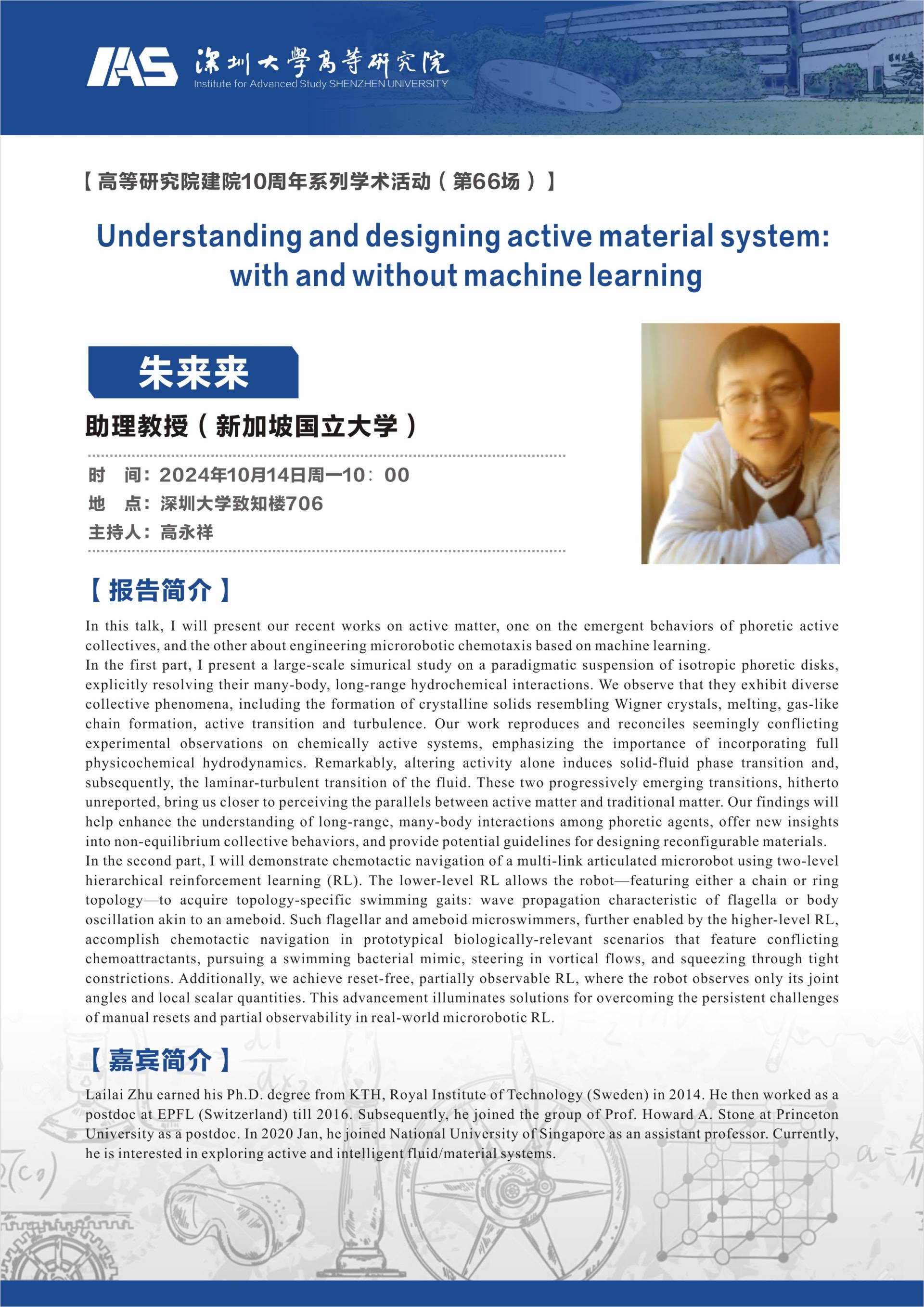报告主题:Understanding and designing active material system: with and without machine learning
主讲人:朱来来助理教授(新加坡国立大学)
主持人:高永祥
时 间:2024年10月14日周一10:00
地 点:致知楼706
嘉宾简介:
Lailai Zhu earned his Ph.D. degree from KTH, Royal Institute of Technology (Sweden) in 2014. He then worked as a postdoc at EPFL (Switzerland) till 2016. Subsequently, he joined the group of Prof. Howard A. Stone at Princeton University as a postdoc. In 2020 Jan, he joined National University of Singapore as an assistant professor. Currently, he is interested in exploring active and intelligent fluid/material systems.
报告摘要:
In this talk, I will present our recent works on active matter, one on the emergent behaviors of phoretic active collectives, and the other about engineering microrobotic chemotaxis based on machine learning.
In the first part, I present a large-scale simurical study on a paradigmatic suspension of isotropic phoretic disks, explicitly resolving their many-body, long-range hydrochemical interactions. We observe that they exhibit diverse collective phenomena, including the formation of crystalline solids resembling Wigner crystals, melting, gas-like chain formation, active transition and turbulence. Our work reproduces and reconciles seemingly conflicting experimental observations on chemically active systems, emphasizing the importance of incorporating full physicochemical hydrodynamics. Remarkably, altering activity alone induces solid-fluid phase transition and, subsequently, the laminar-turbulent transition of the fluid. These two progressively emerging transitions, hitherto unreported, bring us closer to perceiving the parallels between active matter and traditional matter. Our findings will help enhance the understanding of long-range, many-body interactions among phoretic agents, offer new insights into non-equilibrium collective behaviors, and provide potential guidelines for designing reconfigurable materials.
In the second part, I will demonstrate chemotactic navigation of a multi-link articulated microrobot using two-level hierarchical reinforcement learning (RL). The lower-level RL allows the robot—featuring either a chain or ring topology—to acquire topology-specific swimming gaits: wave propagation characteristic of flagella or body oscillation akin to an ameboid. Such flagellar and ameboid microswimmers, further enabled by the higher-level RL, accomplish chemotactic navigation in prototypical biologically-relevant scenarios that feature conflicting chemoattractants, pursuing a swimming bacterial mimic, steering in vortical flows, and squeezing through tight constrictions. Additionally, we achieve reset-free, partially observable RL, where the robot observes only its joint angles and local scalar quantities. This advancement illuminates solutions for overcoming the persistent challenges of manual resets and partial observability in real-world microrobotic RL.



